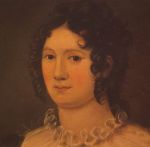Tags
A Treacherous Likeness, Biography as Fiction, Book Review, Crime Fiction, Historical Fiction, Literary Fiction, Lynn Shepherd, Mary Wollstonecraft Shelley, Percy Bysshe Shelley
The French Lieutenant’s Lying Skylark
 Lynn Shepherd continues her sure, impeccably researched, stylish, dark, inventive journey into the historical, literary, murder mystery genre.
Lynn Shepherd continues her sure, impeccably researched, stylish, dark, inventive journey into the historical, literary, murder mystery genre.
Lest this all sounds far too much of a hotch-potch, rest assured Shepherd is an author who can collect together bits and pieces of information, literary genres, literary tricks, and make something new so that you don’t even notice the joins
This is her third book with one of two detectives, both called Charles Maddox. Each book can be read as a stand-alone, but there is no doubt there is an especial enjoyment to be had if the reader has made the earlier journeys.
book can be read as a stand-alone, but there is no doubt there is an especial enjoyment to be had if the reader has made the earlier journeys.
Her first book saw Charles Maddox senior, investigating an alternative world for Jane Austen’s Mansfield Park. Mansfield Park had a much less satisfying, rather glumly good long suffering victim heroine, Fanny Price, rather than the usual spirited, intelligent woman Austen gives us. Using THAT book as a springboard, Shepherd gave the world a twist, and brought a darker world, though still witty, into play, with the investigation of a murder, Murder at Mansfield Park
With her second novel, she got even darker and seamier, in Tom-All-Alone’s (Charles Maddox 2), an amalgam of Dickens’ Bleak House, Wilkie Collins’ The Woman In White, and Henry Mayhew’s real investigation of the dark underbelly of Victorian capitalism, London Labour and the London Poor (Wordsworth Classics of World Literature) So, she was still playing with plots from classic novels, and this time, her detective was Charles Maddox junior (great nephew of the Austen detective)

Shelley

Mary Shelley
For this third book, she blurs the division between the real and the imagined still further, as young Charles Maddox (with the elder Maddox involved in the ensuing events forty years earlier) investigates the mysterious, messy lives of Romantic poet Percy Bysshe Shelley and his female circle – he of the tangled romantic liaisons with very young women (something Shepherd rightly identifies a twenty first century reader might feel remarkably queasy about).
Espousing anarchism, free love, atheism at the early part of the eighteenth century was one thing – and no doubt Shelley and his poetry fed easily into libertarian sympathies (plus of course some soaring, elegiac poetry) However, as biographers have shown (and Shepherd utilises) the man did seem to bring an extraordinary collection of ruined young women, suicides, and the death of children along with him.
There seems at the time to have been a bit of an industry by his widow (Mary Shelley,the probable author of Frankenstein – though this has been more recently in question), surviving son, and son’s wife, to give Shelley’s life a severe whitewashing. Modern biographers have uncovered a lot of supposed very shady goings on, with the whole gang of Shelleys and Godwins of dubious moral scruples. A pretty stinking kettle of fish, all told.

Claire Claremont
It is this tangled web of whitewashed history, possibly very dirty linen and intrigue which Shepherd unleashes Charles Maddox into, turning a dark and shocking tale at times deliciously playful as she makes us, the reader, complicit as omniscient readers to her omniscient narrator.
However, much as I enjoyed this book, and the way Shepherd mangled my perceptions, and toyed with my understanding of what was going on and whom to believe, I am left with a couple of very uncomfortable questions about the ethics of `rewriting’ real people’s lives, particularly with some very murky allegations indeed. I discovered Shepherd `invented’ less than I thought she did, as she very correctly identifies which facts have been unearthed by recent, unwhitewashed biographies, and where she invented, but still, I have questions about `faction’. It is one thing to imagine how a real person may have felt at the time of a real event, or what their motivations may have been for their real actions; it is quite another to invent dark events, which they are the protagonists of. I was left with a sense of moral ambiguity. What are the ethics of literary invention, in the lives of real people? Shepherd may well have transgressed such ethics. The dead cannot speak.

Shelley and Godwin Tree
I received this as a pre-release ARC
Readers beware, for some obscure reason, exactly as with her second novel, there is a different title and publisher for the US and UK editions – BOTH of which are available on Amazon UK. This novel is called A Treacherous Likeness published by Corsair. In August, A Fatal Likeness (the same book!) will be published by Delacorte. Very confusing and annoying!
A Treacherous Likeness Amazon UK
A Fatal Likeness Amazon USA

You must be logged in to post a comment.